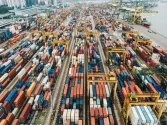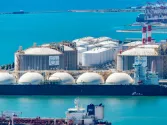
BEA property risks persist but capitalisation, funding offer buffers
Its impaired loan ratio is expected to remain high in 2025.
Bank of East Asia (BEA) still faces challenges from its property loans, but its strong capitalisation, adequate funding and liquidity are expected to provide a buffer against asset risks, said Moody’s Ratings.
The Hong Kong-based bank, one of the two in the city that remains family-owned, continues to face asset quality challenges from its loans to the Hong Kong commercial real estate (CRE) sector.
Moody’s expects the bank to face profitability pressure, given that it may need to make further loan loss provisions as it resolves its mainland property exposures over the next 12-18 months.
BEA’s impaired loan ratio is expected to remain high in 2025 due to said property exposures. Its impaired loan ratio increased to 2.72% in end-2024.
“The asset risk of Hong Kong CRE is elevated amid the prolonged sector downturn,” Moody’s said. It noted that BEA’s Hong Kong CRE exposure was 11.5% of its gross loans as of year-end 2024, moderate compared to some other Hong Kong bank peers.
“Most of the bank's loans to mid- and smaller-sized borrowers are collateralized at low loan-to-value ratios, mitigating the asset risk. The mainland property exposures will continue to weigh on the bank's asset quality, but at a manageable level,” it added.
This is because the bank has materially reduced its exposure to mainland China property developers to 4.9% of its total loans and debt investments as of year-end 2024, from 16% as of the end of September 2021, through loan repayments and write-offs, Moody’s noted.
Bank of East Asia's profitability will face ongoing pressure from a narrower net interest margin (NIM) and anticipated elevated credit costs in 2025.
“The bank's good NIM, despite narrowing slightly by five basis points to 2.09% in 2024, together with the growth of non-interest income, underpinned its pre-provision income,” the ratings agent said.
“This strength enabled the bank to make provisions against its deteriorated loan portfolio,” it added.

















 Advertise
Advertise








